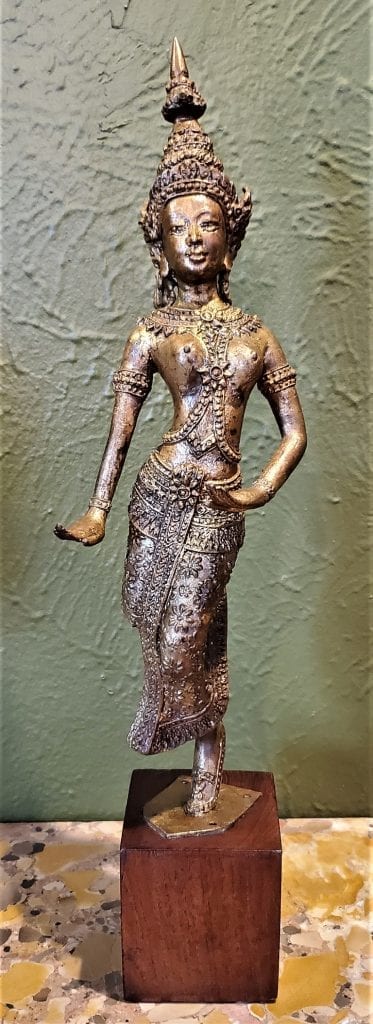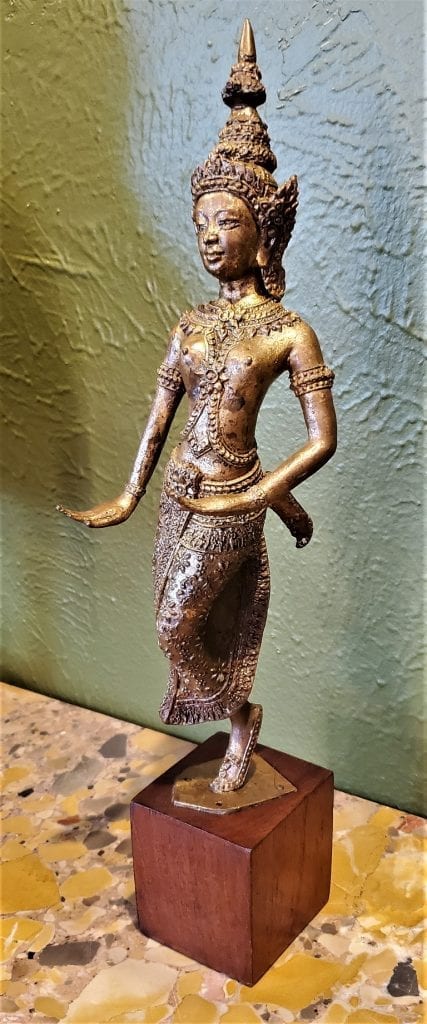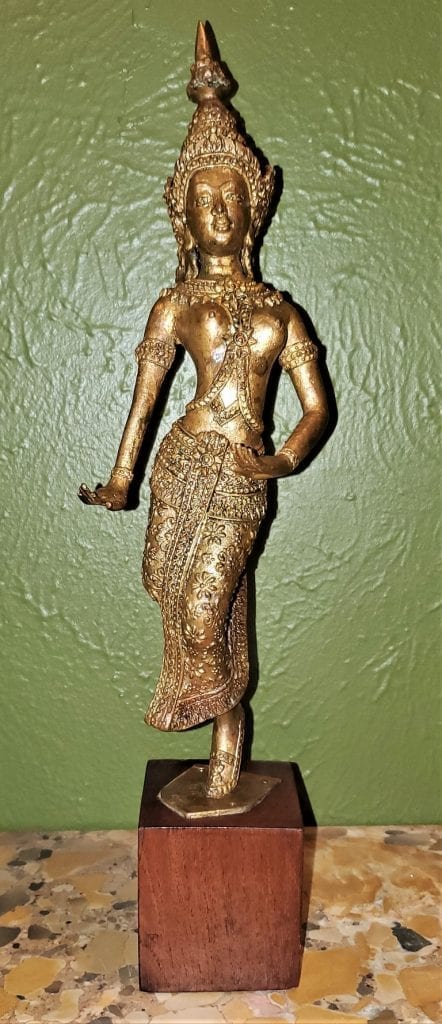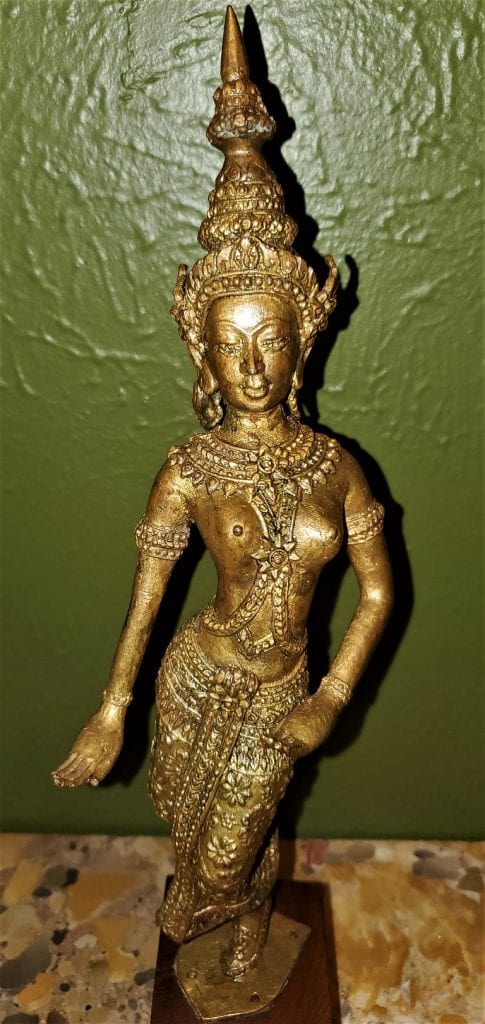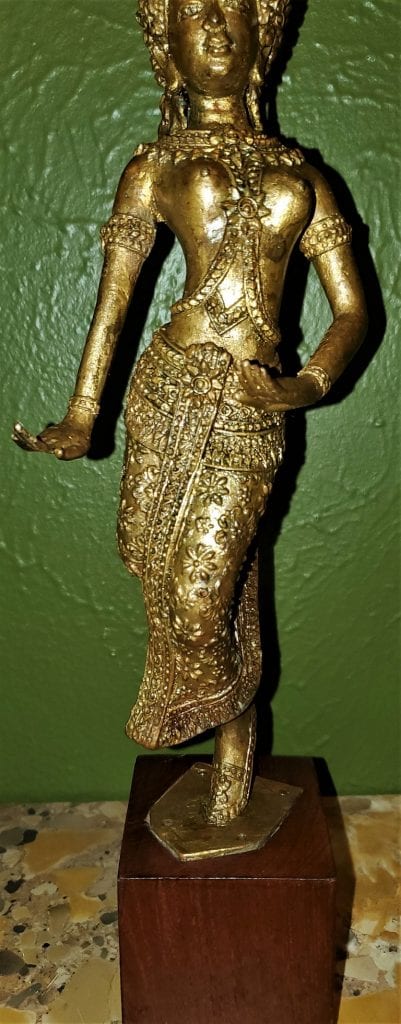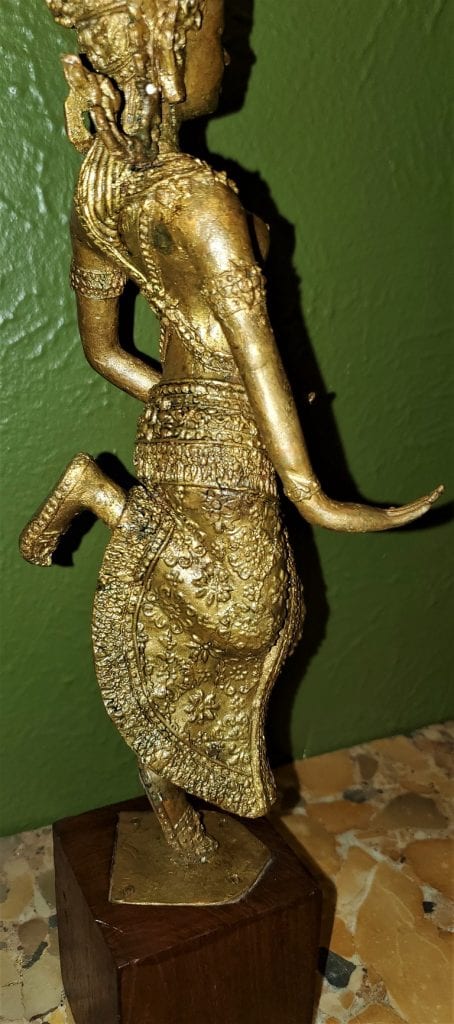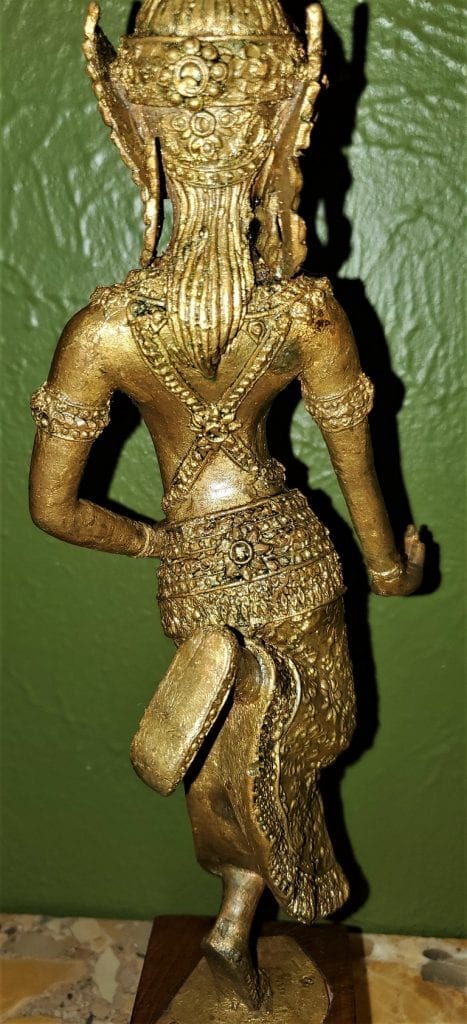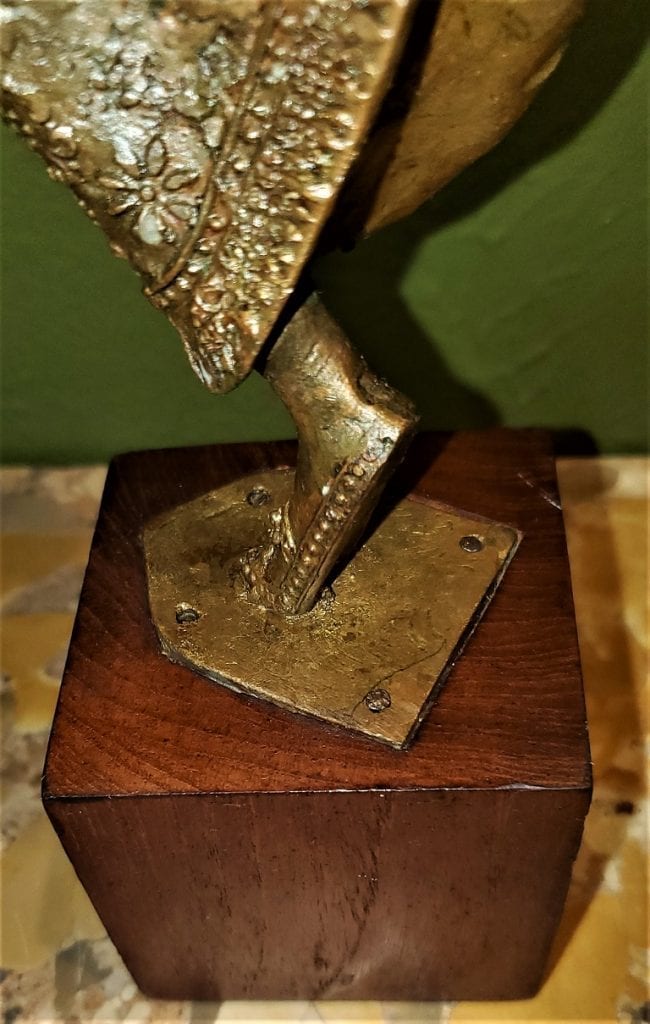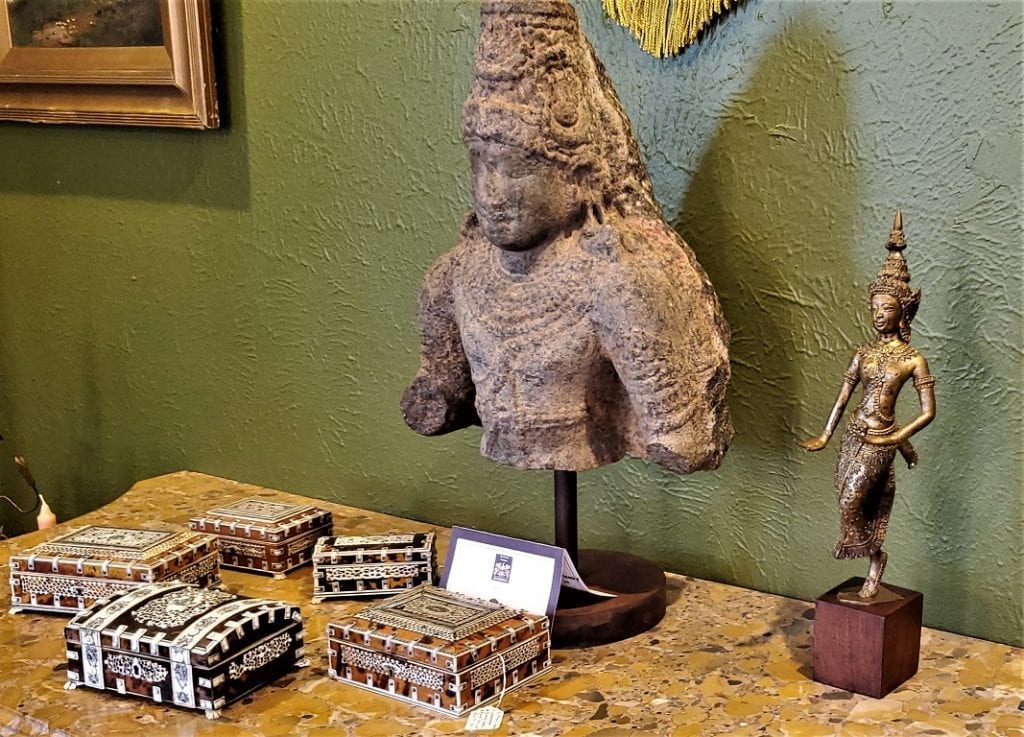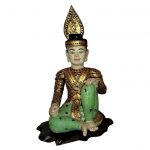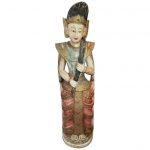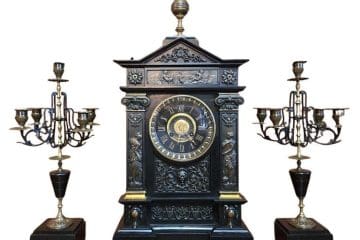Early 20C Gilt Metal Thai Khon Dancer
PRESENTING a BEAUTIFUL Early 20C Gilt Metal Thai Khon Dancer.
Made in Thailand (South East Asia) circa 1920.
It features a gilt metal statue of a traditional Thai Khon Dancer in pose and mounted on a wooden plinth.
Beautiful detail to the piece throughout … from the headdress all the way down to her footwear.
In excellent condition for it’s age with no losses and some very minor rubbing to the git as one would expect with natural aging.
Acquired by a Private Dallas Collector on a trip to SE Asia in the 1970’s.

Khon is a Thai traditional dance which combines many arts. There was no exact evidence that dates its provenance, but it is mentioned in Thai literature’s Lilit Phra Lo (c. 1529) which was written before the era of King Narai Maharaj.
Historical evidence shows that the Thai art of stage plays must have already been highly evolved by the 17th century. In 1687, Louis XIV of France sent a diplomat Simon de la Loubère to record all that he saw in the Siamese Kingdom. In his famous account Du Royaume de Siam, La Loubère carefully observed the classic 17th century theatre of Siam, including an epic battle scene from a Khon performance, and recorded what he saw in great detail:
The Siamese have three sorts of Stage Plays: That which they call Cone [khôn] is a figure dance, to the sound of the violin and some other instruments. The dancers are masked and armed, and represent rather a combat than a dance. And though every one runs into high motions, and extravagant postures, they cease not continually to intermix some word. Most of their masks are hideous, and represent either monstrous Beasts, or kinds of Devils. The Show which they call Lacone is a poem intermix with Epic and Dramatic, which lasts three days, from eight in the morning till seven at night. They are histories in verse, serious, and sung by several actors always present, and which do only sing reciprocally …. The Rabam is a double dance of men and women, which is not martial, but gallant … they can perform it without much tying themselves, because their way of dancing is a simple march round, very slow, and without any high motion; but with a great many slow contortions of the body and arms.
Of the attire of Siamese Khôn dancers, La Loubère recorded that, “those that dance in Rabam, and Cone, have gilded paper-bonnets, high and pointed, like the Mandarins caps of ceremony, but which hang down at the sides below their ears, which are adorned with counterfeit stones, and with two pendants of gilded wood.”
The origin of Khon is hinted at by the origin of the word “Khon”. Its origin is not precisely known, but there are four possibilities. First, “Khon” in Benguela Kalinin appears in the words “kora” or “Khon” which is the name of a musical instrument made of Hindi leather. Its appearance and shape are similar to the drum. It was popular and used for local traditional performances. It was assumed that kora was one of the instruments used in Khon performances. In the Tamil language “Khon” derives from the word “koll” which is close to “goll” or “golumn” in Tamil. These Tamil words relate to dressing or decorating the body from head to toe as in the use of Khon costumes. “Khon” in Iran was derived from the words “zurat khan” which means ‘handed-doll’ or ‘puppet’, used in local performances. Its songs were similar to current Khon.


Early 20C Gilt Metal Thai Khon Dancer.
Provenance: From a Private Dallas Collection.
Condition: Very good original condition.
Dimensions: 16 in Tall, 4.5 in Wide and 4.5 in Deep (square wooden base)
SALE PRICE NOW: $480



